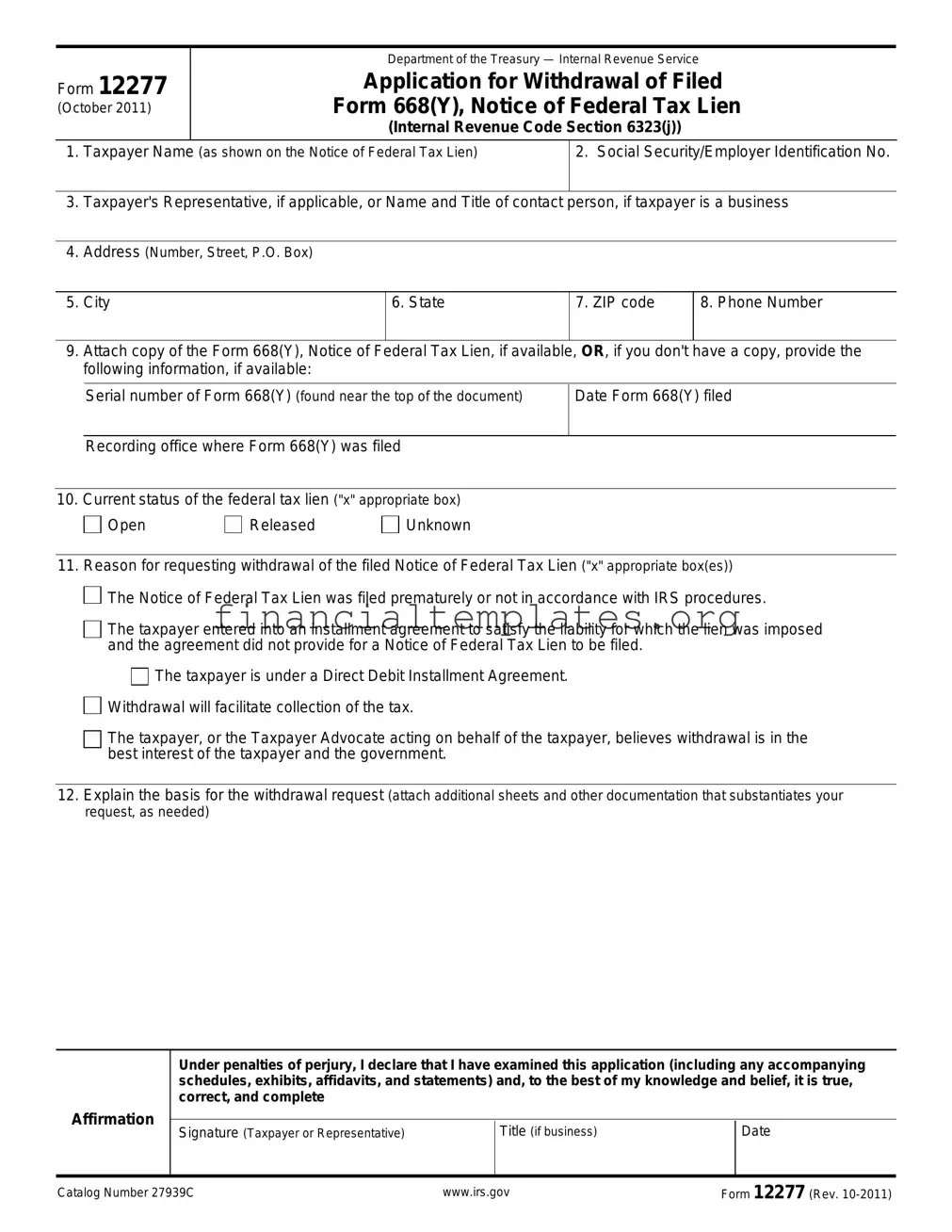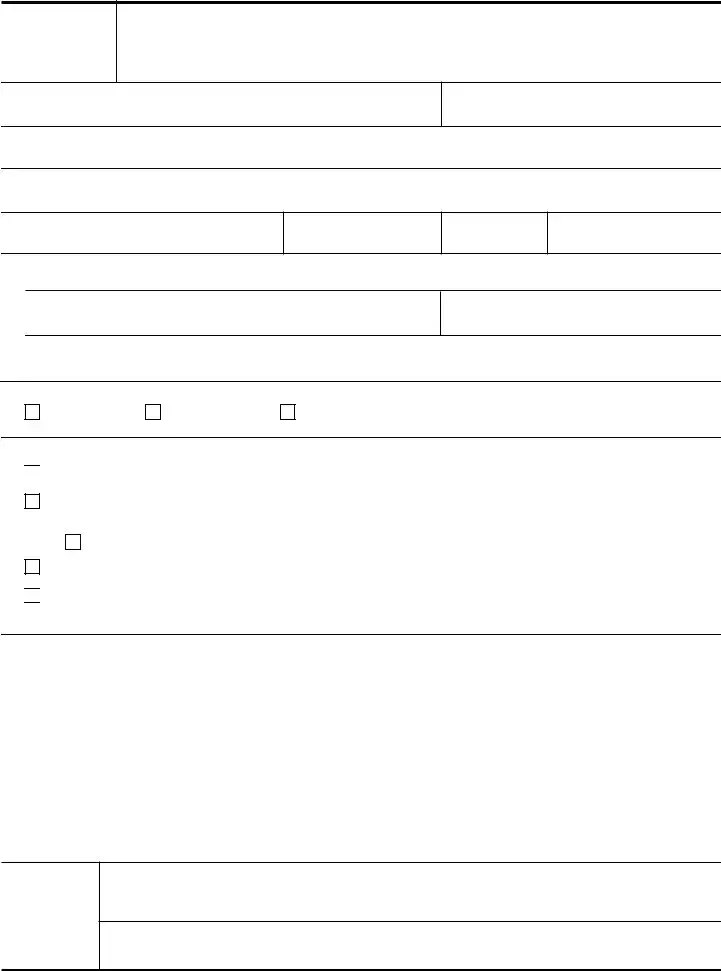The IRS Form 656, also known as the Offer in Compromise (OIC), shares a key similarity with Form 12277 in that both aim to alleviate taxpayer burden. While Form 656 focuses on allowing taxpayers to settle their debt for less than the full amount owed when they can't pay their full tax liability, or doing so creates a financial hardship, Form 12277 is used to request the withdrawal of a federal tax lien. Both forms serve to help taxpayers in distress, though they address different aspects of tax relief and resolution.
The IRS Form 433-A, the Collection Information Statement for Wage Earners and Self-Employed Individuals, parallels Form 12277 in its use for financial assessment. The Form 433-A is crucial for determining an individual’s ability to pay back taxes, similar to how Form 12277 evaluates the appropriateness of lifting a lien based on current financial situations. Both are essential tools in negotiating with the IRS regarding one's tax liabilities and resolving outstanding obligations.
The IRS Form 843, Claim for Refund and Request for Abatement, resembles Form 12277 in its role in rectifying tax matters. While Form 843 is used to request a refund or ask for an abatement of certain taxes, penalties, fees, and interest, Form 12277 is specifically aimed at withdrawing a lien. Both forms are integral to addressing disputes or burdens regarding one’s tax responsibilities and seeking a form of relief or correction to one's tax record.
The IRS Form 2848, Power of Attorney and Declaration of Representative, is closely related to Form 12277 in the empowerment it grants. Just as Form 2848 allows individuals to authorize someone else to represent them before the IRS, handling forms like Form 12277 can also be part of such a representative's duties. Both forms are crucial in navigating the complexities of tax issues, especially for those who seek the expertise of a professional to manage their cases.
Similar to IRS Form 12277, the Form 9465, Installment Agreement Request, is another avenue for taxpayers seeking relief. While Form 9465 enables taxpayers to request a monthly payment plan for taxes owed, Form 12277 seeks to remove the lien from public record as a form of relief. Both approaches provide taxpayers with options to manage or mitigate their tax burdens in a more manageable fashion.
IRS Form 8821, Tax Information Authorization, shares a connection to Form 12277 through the theme of authorization. Form 8821 permits individuals or entities to authorize others to access their tax information, which might be necessary when dealing with tax liens and using Form 12277. Both forms facilitate dealing with the IRS by allowing either broader access to information or the ability to address specific tax issues like liens.
The Application for Taxpayer Assistance Order (Form 911) and IRS Form 12277 both serve as critical tools for taxpayers facing significant hardship due to their tax situations. Form 911 seeks assistance from the Taxpayer Advocate Service for those in severe need, potentially including situations where a tax lien has caused undue strain, making the resolution of such matters through Form 12277 a related process. These forms collectively represent recourse for taxpayers in distress.
The IRS Form 14039, Identity Theft Affidavit, while primarily focused on addressing identity theft issues, connects to Form 12277 by its nature of protecting the taxpayer’s interest. Just as Form 14039 alerts the IRS to fraudulent activity potentially affecting one's taxes, Form 12277 serves to rectify the consequences (like a lien) of unsettled tax disputes, which could also stem from identity theft scenarios. Both are pivotal in safeguarding taxpayer rights and resolving issues with the IRS.
Finally, the Request for Transcript of Tax Return, IRS Form 4506-T, bears similarity to Form 12277 by providing essential information that might be needed to resolve tax disputes, including those involving liens. Access to previous tax returns via Form 4506-T can be crucial in proving compliance or rectifying issues that necessitated the use of Form 12277. Both forms aid in clarifying and settling tax matters, making them important in the landscape of tax resolution and documentation.



 The Notice of Federal Tax Lien was filed prematurely or not in accordance with IRS procedures.
The Notice of Federal Tax Lien was filed prematurely or not in accordance with IRS procedures.
 The taxpayer, or the Taxpayer Advocate acting on behalf of the taxpayer, believes withdrawal is in the best interest of the taxpayer and the government.
The taxpayer, or the Taxpayer Advocate acting on behalf of the taxpayer, believes withdrawal is in the best interest of the taxpayer and the government.